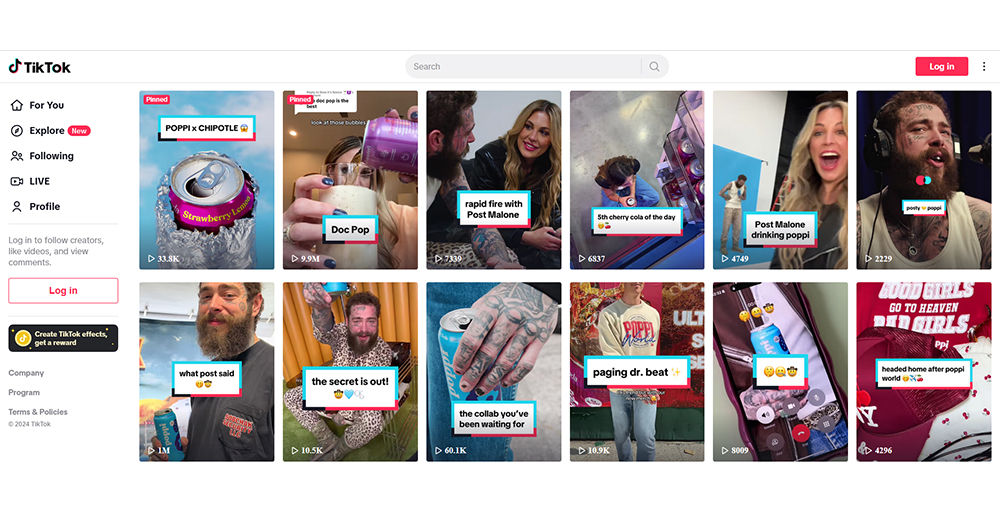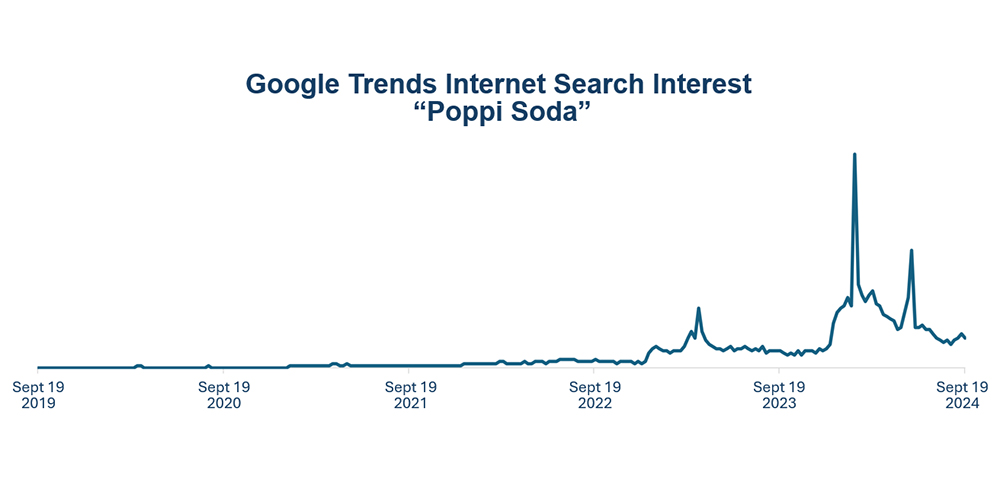Pricing phenoms before they really pop: My ride-along during our hackathon
Imagine we’re back in 2020, and you are a pricing analyst tasked with forecasting demand and setting prices for Mother Beverage sodas. Their “prebiotic” sodas have great flavor and claims of some (now contested) health benefits, and they boast a small but dedicated customer base. They are in about 200 stores, with relatively steady annual sales of ~$500,000. I know what you’re thinking: small store count, loyal customers, steady sales. In all likelihood, the pricing strategy for Mother Beverage’s sodas is going to be filed in your “set it and forget it” folder.
Now fast-forward to 2022, not long after the Mother Beverage founders appear on “Shark Tank” and secure a deal from part-time Shark and established beverage brand magnate Rohan Oza, the man behind vitaminwater, Vita Coco and Bai. And also not long after, Oza embarks on a process to completely rebrand the company. Together, they will change the packaging from boutique glass bottles to brightly colored cans covered with visually arresting fruit. They will add some new flavors and rename others. They will completely change their brand marketing strategy.
And they will change the name of the brand … to Poppi.
Yes, that Poppi. The same Poppi that your kids probably discovered on TikTok. Because that’s where Poppi will put a big chunk of their marketing focus: on programs designed to generate social media interest. And believe me when I tell you, those programs will work. Now, just two years later, Poppi products sit in ~20,000 stores, and their annual revenues are topping $100 million.
That Poppi.
Would you have been prepared for Poppi to pop?
If you were tasked with pricing the soda category in 2022, would you have forecasted that jump for Poppi? Unless you were highly attuned to TikTok, I am guessing not.

Poppi’s first viral TikTok video (of the founders telling their origin story) reached an estimated 26 million viewers. And not surprisingly, sales jumped. After the success of that initial video, they doubled down on social media as the centerpiece of their brand strategy, and the rest, as they say, is history. Today they have acquired hundreds of thousands of followers on most of the major social media platforms, with total views of their content in the hundreds of millions.
Imagine if you had early visibility into the phenomenon that became Poppi
Now, we all know that predicting the next big social media trend before it happens is notoriously difficult, if not impossible, to do. But what about identifying those trends as they are just really beginning to pop? Imagine the advantage for any pricing teams that could anticipate early the continued rise of those trends and adapt their pricing and promotions strategies accordingly. Imagine the opportunities you would have had to gain share if you were pricing sodas in 2022.
That’s exactly what a group of my colleagues have done: they have imagined how Revionics solutions could add meaningful value to our clients if we could find a way to integrate social media trends into our tool in order to equip merchants with the insights they need to price more intelligently. To combine current internet trends with historical sales data to identify social media-driven demand shifts more accurately and thereby recommend price changes accordingly.

And a few Revionics colleagues have taken the first important step toward bringing their imaginings to life: they have created a proof of concept. They did so as participants in a hackathon that was recently produced by our Product Management team.
The hackathon was designed to bring together people from across the business to share ideas for our products that could help our clients more easily overcome challenges and capture more opportunities. Colleagues in product development, data science, customer support, professional services, sales and marketing all gathered to bring new product ideas to the table.
Vice President of Product Management Josh Oettle and his team asked people to come together to share their ideas and to recruit the people they thought they would need to help them hack a proof of concept of their ideas into existence. The enthusiasm from everyone in attendance at the hackathon kickoff call was, in a word, startling. They were into this. They congratulated each other on their ideas, they contributed with advice and suggestions, and they eagerly agreed to join a team when recruited. Sure, Revionics offered cash prizes to the teams with the best ideas, but I really don’t think money was the motivator. People were simply excited to have a chance to make a difference.
And make a difference they did. When we reassembled a couple of weeks later to watch each team present their hacks, about a dozen working proofs of concept were presented. They were all thoughtful concepts designed to help our products solve challenges our clients face in the world of retail pricing. And they all had the potential to add real value to our products.
Here are a few highlights (in addition to the social media trends forecast example I described previously):
- A concept designed to make it easier for clients to update and maintain the rules that guide the way our science manages private label pricing recommendations
- A concept designed to help customers identify how changes in prices might affect their pricing objectives by analyzing elasticity values
- A concept designed to merge KPIs, margin goals and up-to-the minute inflation (or deflation) effects to better optimize prices to balance all objectives on a weekly basis
- An intelligent wizard designed to optimize price zone modeling against an expanded list of location attributes to ensure even more localized recommendations (and outcomes)
There were, of course, many more hacks that brought to life ideas that were generated from across the business. None of these are deliverable product, of course, but according to Product Management, several of the ideas have already been identified as candidates for future product roadmaps. And three of the hacks were awarded cash money for their ingenuity, value and potential impact for our customers.
But to me, the real prizes will go to the business. Because in this particular instance, it seems clear that hacking is a very good thing.
Dave Bruno, a 30-year veteran of retail technology, is the Director of Retail Industry Insights for Revionics, an Aptos Company. Connect with him on LinkedIn.
